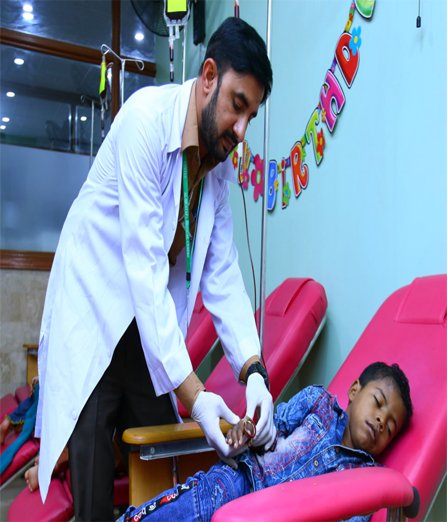Help for Thalassemia Patients
A blood disorder involving lower-than-normal amounts of an oxygen-carrying protein
Symptoms and Causes: The symptoms of thalassemia can vary. Some of the most common ones include: bone deformities, especially in the face, dark urine, delayed growth and development excessive tiredness and fatigue yellow or pale skin. Not everyone has visible symptoms of thalassemia. Signs of the disorder also tend to show up later in childhood or adolescence.
Diagnosis and Tests: If your doctor is trying to diagnose thalassemia, they’ll likely take a blood sample. They’ll send this sample to a lab to be tested for anaemia and abnormal haemoglobin. A lab technician will also look at the blood under a microscope to see if the red blood cells are oddly shaped. Abnormally shaped red blood cells are a sign of thalassemia. The lab technician may also perform a test known as haemoglobin electrophoresis. This test separates out the different molecules in the red blood cells, allowing them to identify the abnormal type.
Management and Treatment: The treatment for thalassemia depends on the type and severity of disease involved. Your doctor will give you a course of treatment that will work best for your particular case. If you’re receiving a blood transfusion, you may also need chelation therapy. This helps remove extra iron from your body.
